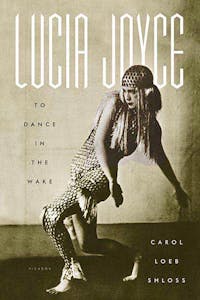Lucia Joyce
To Dance in the Wake
 Download image
Download image
ISBN10: 0312422695
ISBN13: 9780312422691
Trade Paperback
576 Pages
$26.00
CA$26.99
National Book Critics Circle Award Nominee
Most accounts of James Joyce's family portray Lucia Joyce as the mad daughter of a man of genius, a difficult burden. But in this important new book, Carol Loeb Shloss reveals a different, more dramatic truth: Lucia's father not only loved her but shared with her a deep creative bond. His daughter, Joyce wrote, had a mind "as clear and as unsparing as the lightning."
Born at a pauper's hospital in Trieste in 1907, educated haphazardly in Italy, Switzerland, and Paris as her penniless father pursued his art, Lucia was determined to strike out on her own. She chose dance as her medium, pursuing her studies in an art form very different from the literary ones celebrated in the Joyce circle and emerging, to Joyce's amazement, as a harbinger of modern expressive dance in Paris. He described her then as a wild, beautiful, "fantastic being" who spoke "a curious abbreviated language of her own" that he instinctively understood—for in fact it was his as well. The family's only reader of Joyce's work, Lucia was a child of the imaginative realms her father created. Even after emotional turmoil wreaked havoc with her and she was hospitalized in the 1930s, Joyce saw in her a life lived in tandem with his own.
Though most of the documents about Lucia have been destroyed, Shloss has painstakingly reconstructed the poignant complexities of her life—and with them a vital episode in the early history of psychiatry, for in Joyce's efforts to help his daughter he sought out Europe's most advanced doctors, including Jung. Lucia emerges in Shloss's account as a gifted, if thwarted, artist in her own right, a child who became her father's tragic muse.
In Lucia's world, beautifully rendered in this remarkable narrative, Shloss has uncovered fascinating material that deepens our understanding of Finnegans Wake, the book that redefined modern literature. Lucia Joyce: To Dance in the Wake is a milestone work in the study of art in the making, as well as a thought-provoking meditation on fathers and daughters. Through the life of Lucia Joyce we see the birth of modernism not just as a series of texts but as a mode of daring.
Reviews
Praise for Lucia Joyce
"[Carol Loeb Shloss] argues that not only was Lucia an extraordinary artist in her own right, she was also central to the creation of Finnegans Wake . . . Joyce scholars say that Ms. Shloss's work us important because Lucia was pivotal to Joyce's work."—The New York Times
"Shloss's patient research expands what could have been a footnote in literary history into a tragedy of wasted promise. Shloss gives is a James Joyce we have never seen before."—Time
"Carol Loeb Shloss has written the first scholarly study of Lucia Joyce's fate; the first not only to attempt answers but also to ask the questions, including the principal one: 'What happened to that lively radiance?' . . . This book not only rescues Lucia's life from oblivion; simply in its description of [her father] James Joyce, blind and near death, focused on rescuing Lucia from possible harm as the Nazis devoured Europe, it is also a valuable addition to his biography as well . . . This book gives substance to a life that has previously been treated as a distracting footnote. Shloss adds literary criticism of Finnegans Wake to illuminate Lucia's role as subject and inspiration that deepened her father's writing. Students of 20th century European literary and cultural history as well as women's studies will find this book very useful . . . The virtues of Lucia Joyce are considerable, and its existence is testament to heroic effort."—William S. Kowinski, San Francisco Chronicle
"The best feature of Shloss's book is its vivid, informed description [of] experimental dance groups in 1920's Europe, and [Schloss's] account of how Lucia came into contact with modernism and surrealism while her father was writing the Wake . . . This biography will certainly alert you to her presence [in the pages of] Finnegans Wake—a pathetic, vanishing figure, flitting through her father's book."—Hermione Lee, The New York Times Book Review
"A sharply perceptive and disturbing meditation on the terrible price that great art often levies not only on the artist but on those closest to him . . . Lucia Joyce's story, which Shloss tells so movingly, not only wrings the heart but stirs one's anger."—John Banville, The New York Review of Books
"The most impressive feature of her book is the delicacy with which it handles the complex ambiguities of the Joyce-Lucia relationship . . . Shloss argues persuasively that the conclusion of Finnegans Wake pays homage to Lucia, as Joyce poignantly seeks to make amends to his beloved daughter and convince her that all may still be well."—Terry Eagleton, London Review of Books
"The author of this groundbreaking new study of the life of Lucia Joyce (1907-1982), the daughter of James Joyce, shares an artistic sensibility with her subject that gives her a special insight for viewing Lucia's life."—Publishers Weekly


